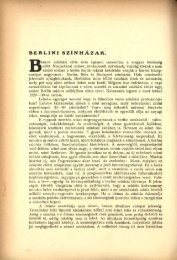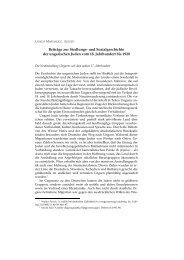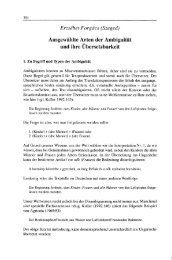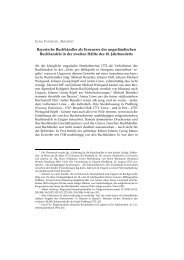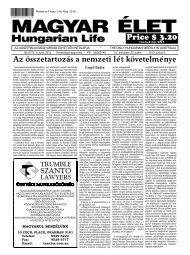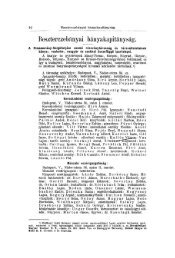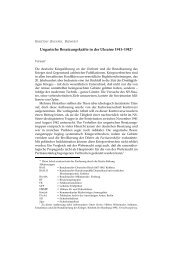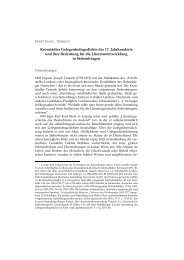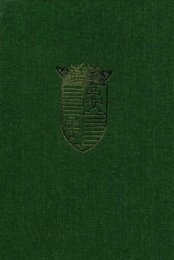hungarian studies - EPA - Országos Széchényi Könyvtár
hungarian studies - EPA - Országos Széchényi Könyvtár
hungarian studies - EPA - Országos Széchényi Könyvtár
You also want an ePaper? Increase the reach of your titles
YUMPU automatically turns print PDFs into web optimized ePapers that Google loves.
to<br />
LÁSZLÓ BORHI<br />
of the purges. It turned out that it was not Rákosi who was responsible, but Péter<br />
and his associates. In the summer of 1956 Péter took vengeance on Rákosi, helping<br />
to destroy him by revealing his former master's true role in the show trails of<br />
1949.<br />
The function of terror in a Stalinist society was to enforce compliance, to destroy<br />
pre-existing values, to break down preconceptions, to make it easier for the<br />
new revolutionary values to take root, and to facilitate the politicization of society.<br />
Stalinism was an ideology of perfection. Hence, by definition there could be<br />
no problems that could not be solved. Should a solution fail, failure could not be<br />
attributed to the ideology, only to antagonists. Consequently, there was no place<br />
for error, there were no accidents or honest mistakes. 45 In the implementation of<br />
terror against real and imagined "hostile elements," Hungary followed the Soviet<br />
model closely, not only because Moscow demanded it, but also because the country's<br />
rulers believed in the dictatorship of the proletariat. Rákosi agreed with Lenin's<br />
definition, "Rule founded on violence unconstrained by law". 46 Even one<br />
decade after his fall, Rákosi still believed that Stalin's definition of the kulaks<br />
remained valid. In 1955 almost seventy thousand people worked for the Ministry<br />
of the Interior. Most of them belonged to the border guards, or wore the uniform<br />
of one of the police organizations. 47 Their enemies were numerous. According to<br />
contemporary Soviet figures the cases of 362,000 people were taken to court in<br />
1951, and additional administrative, meaning police, proceedings involved another<br />
half million. 48 Even so, in 1953 Zoltán Bíró, the deputy head of the Central<br />
Committee's Agitation and Propaganda Division, estimated that there were still<br />
around 500,000 hostile elements 49 in a country of less than ten million. Beria<br />
believed that 1,500,000 people had been subjected to legal proceedings prior to<br />
1953. 50 Up to the end of the first quarter of 1953 alone the courts tried 650,000<br />
people and sentenced 387,000; the police meted out punishment in 850,000 cases. 51<br />
As a comparison, in Poland there were six million names on the list of "criminal<br />
and suspicious elements" in 1954, that is one third of the adult population. In 1950<br />
thirty-five thousand political prisoners were held in Polish jails. 52 Of course the<br />
massive hunt for "enemies" did not cease after 1953. A note prepared by József<br />
Révai sheds light on the list of those the system regarded as enemies: Zionist and<br />
Hungarian bourgeois nationalists, the remnants of capitalists, kulaks and cosmopolitans.<br />
"It is impossible not to talk about the bourgeois remnants of ideology<br />
beside the remnants of the capitalist classes, which nourish the hostile forces. In<br />
Hungary these remnants are much larger and more dangerous than in the Soviet<br />
Union, because in Hungary there was hardly any struggle against them and the<br />
majority of our intelligentsia is bourgeois". 53 The chief targets were the former<br />
"ruling classes" and the kulaks. Rákosi borrowed Stalin's interpretation of the<br />
kulaks and considered them the most implacable enemies of Socialist construction.<br />
According to this view, the kulaks along with the former "ruling classes"


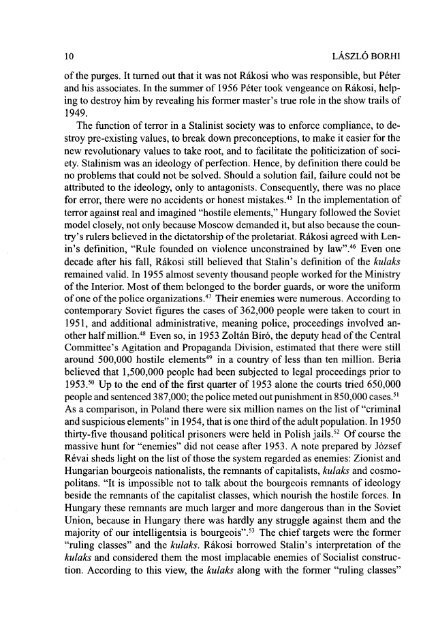
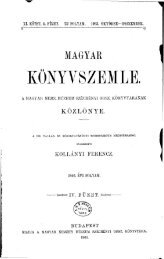
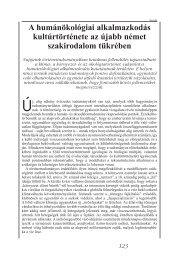
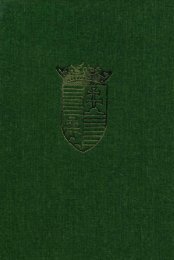
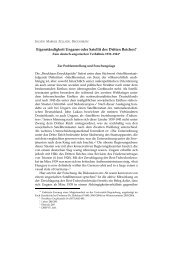
![Letöltés egy fájlban [36.8 MB - PDF] - EPA](https://img.yumpu.com/23369116/1/172x260/letoltes-egy-fajlban-368-mb-pdf-epa.jpg?quality=85)
